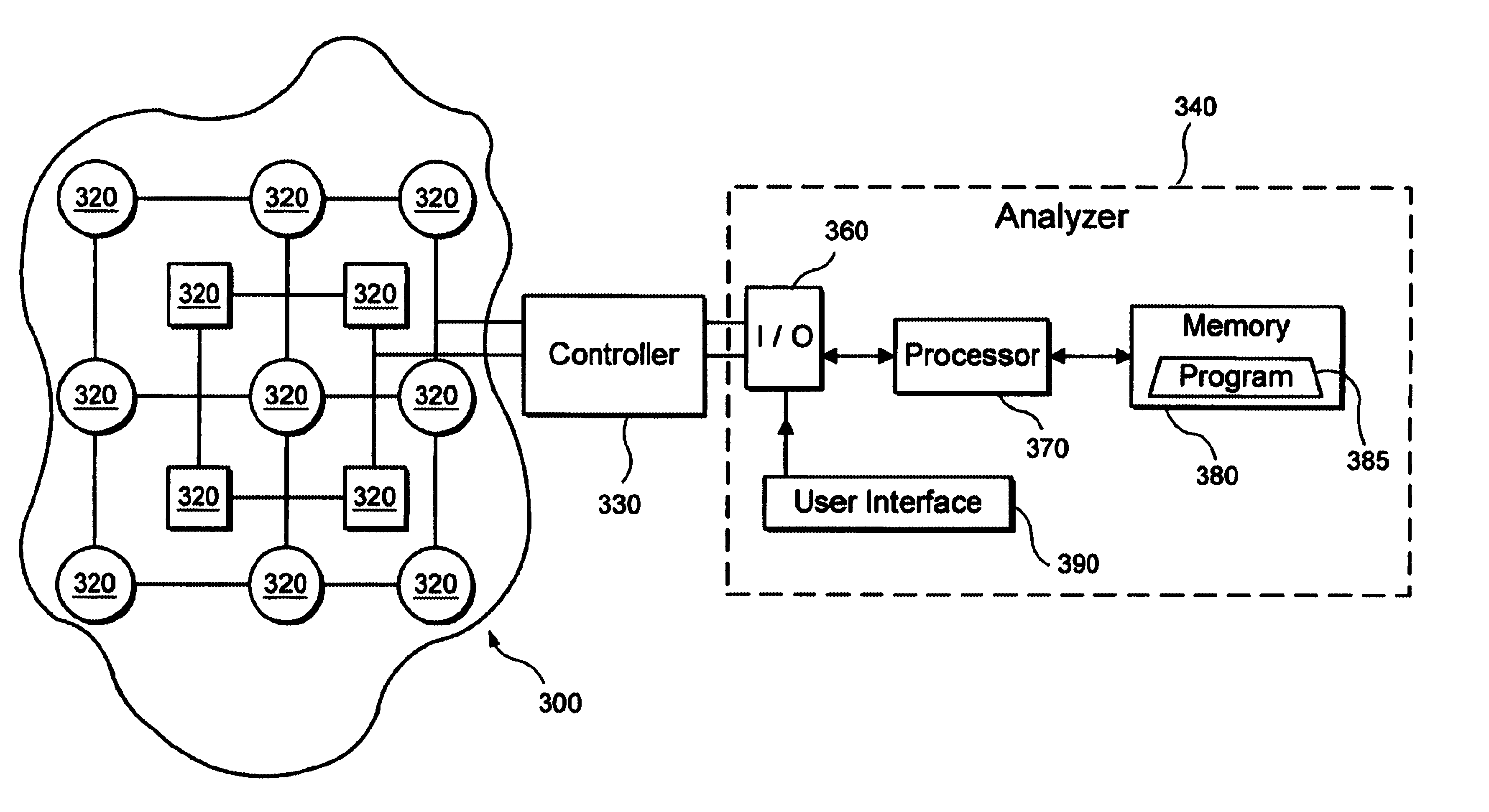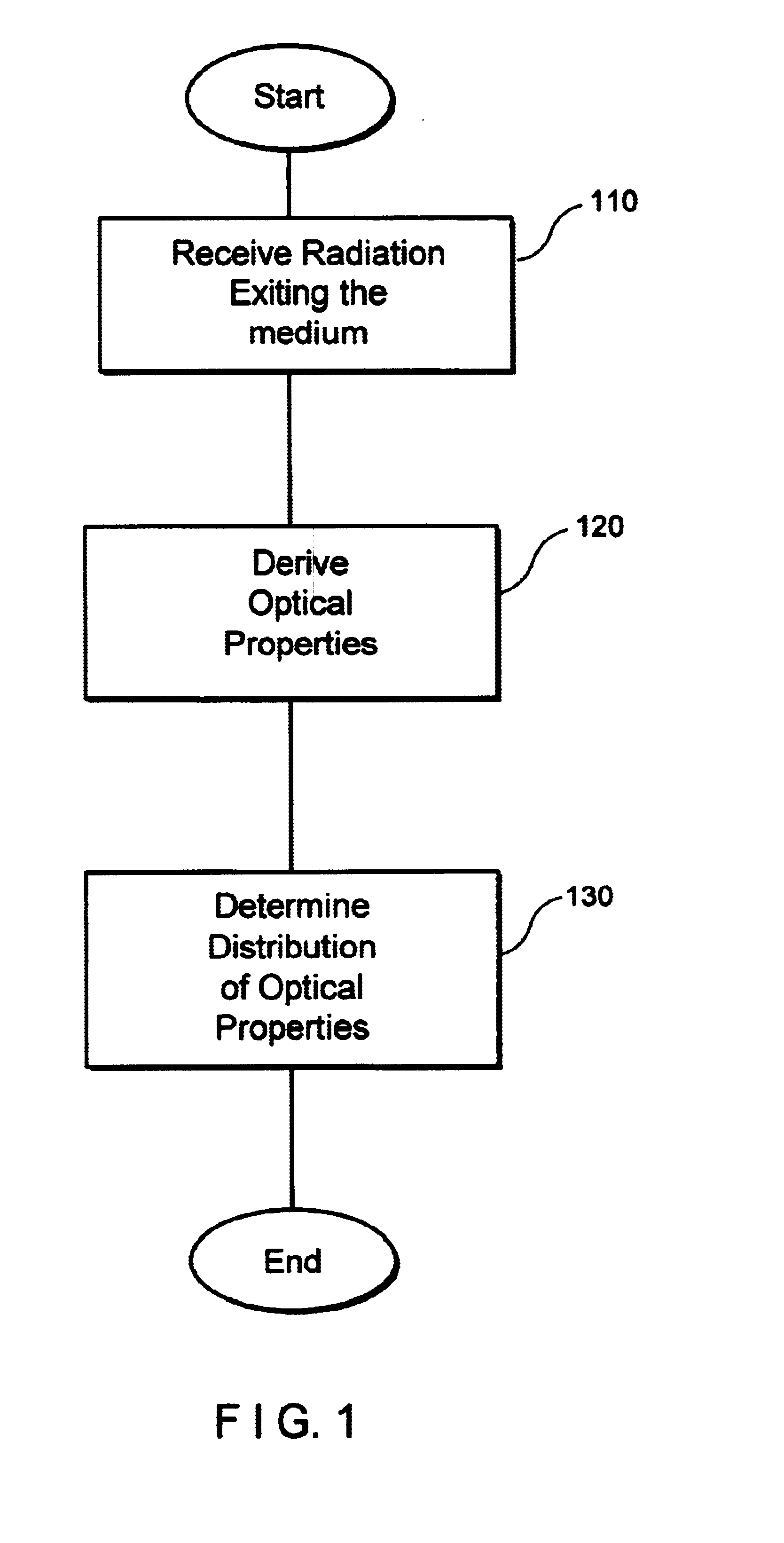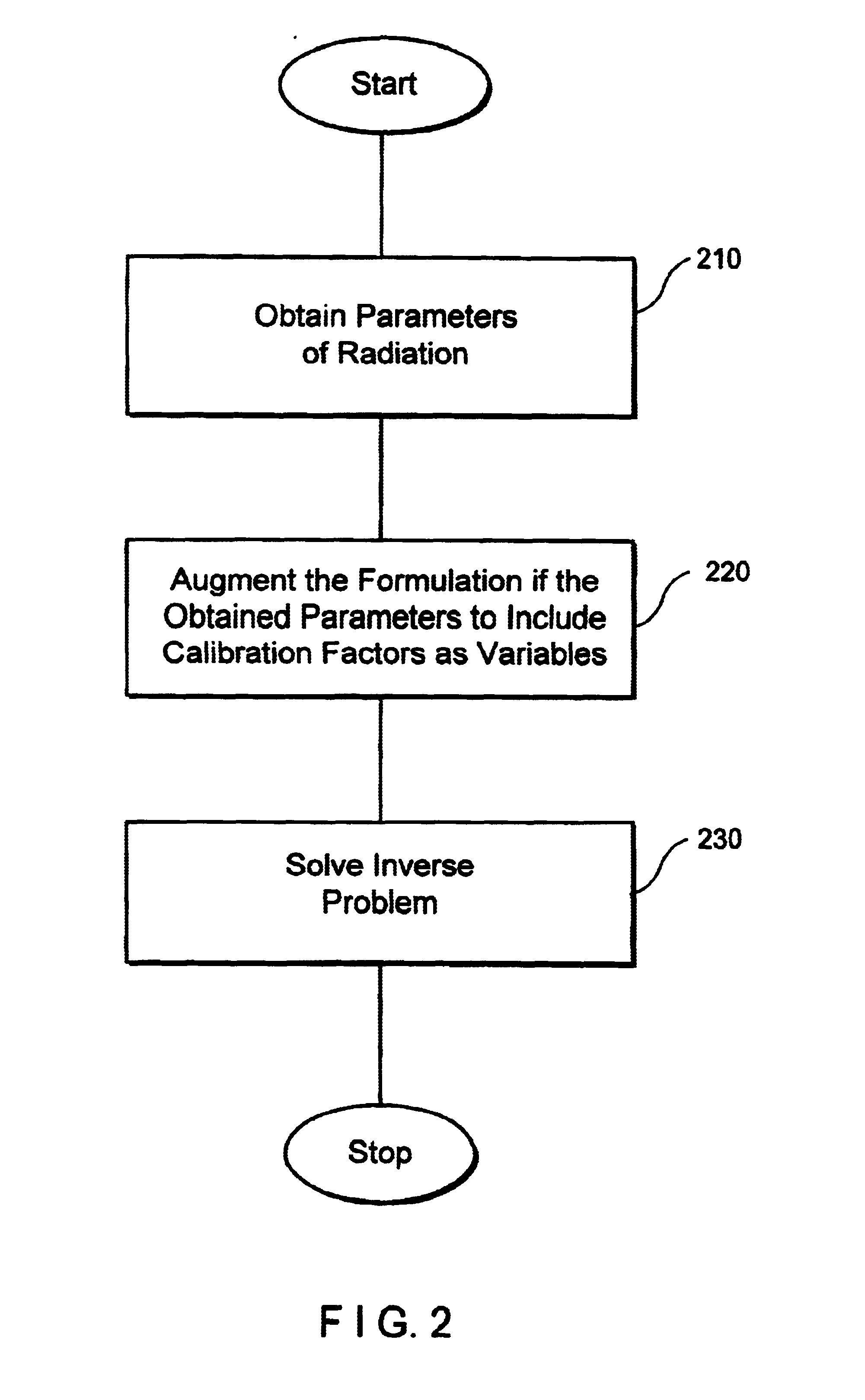System and method for enabling simultaneous calibration and imaging of a medium
- Summary
- Abstract
- Description
- Claims
- Application Information
AI Technical Summary
Benefits of technology
Problems solved by technology
Method used
Image
Examples
example 1
Simulation of Image Reconstruction
[0088]Several advantages of the methods of the present invention were demonstrated by simulations. The results obtained utilizing a normalized Rytov approximation without the reconstruction of calibration factors (i.e., without using the new calibration methods), a normalized Rytov approximation with reconstruction, a Born approximation with reconstruction, and a Rytov approximation without normalization were compared. A diagram of a first example of an experimental geometry is shown in FIG. 5.
[0089]The computer simulation involved the transmission through a 6-cm thick slab with background optical properties μso′=10 cm−1 and μao,=0.15 cm−1. A 1.6-cm diameter absorbing object 550 with μso′=10 cm−1 and μao=0.15 cm−1 was centered at (x, y, z)=(1, −1, 3) cm. Sixteen sources 510 were programmed in a four-by-four grid at z=0, spaced 2 cm apart to span x=−3 to 3 cm and y=−3 to 3 cm. Similarly, sixteen detectors 520 were located in a four-by-four grid at z=...
example 2
Phantom Results
[0105]The actual image results of a phantom have also been obtained, and FIG. 12 shows the experimental setup for imaging the phantom. A phantom box 1210 has a set of sources and a set of detectors on its top and bottom plates, respectively. The phantom box 1210 is connected with an RF Imager 1230 with a set of detector fibers 1220. The phantom box 1210 is also connected with a controller 1280 via a set of source fibers 1270. A processing arrangement 1290 is coupled with the controller 1280. The phantom box 1210 is further coupled with a beaker 1240 and a pump 1250.
[0106]The phantom box 1210 was filled with 0.5% intralipid solution, and a 2-cm diameter heterogeneity sphere was embedded in this solution. The content of the sphere was controlled by the circulation channel outside the phantom box 1210, which included the pump 1250 and the beaker 1240 for ink titration. In the experiment, a slab geometry was formed, with the slab having a thickness of 5.11 cm. The center ...
PUM
 Login to View More
Login to View More Abstract
Description
Claims
Application Information
 Login to View More
Login to View More - R&D
- Intellectual Property
- Life Sciences
- Materials
- Tech Scout
- Unparalleled Data Quality
- Higher Quality Content
- 60% Fewer Hallucinations
Browse by: Latest US Patents, China's latest patents, Technical Efficacy Thesaurus, Application Domain, Technology Topic, Popular Technical Reports.
© 2025 PatSnap. All rights reserved.Legal|Privacy policy|Modern Slavery Act Transparency Statement|Sitemap|About US| Contact US: help@patsnap.com



